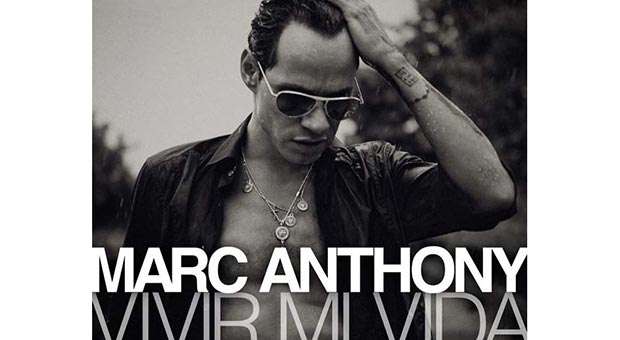Since his alliance with Pitbull in Rain over Me Marc Anthony was not so frequently heard on the radio. That ephemeral nature of popular music, which comes and goes, he has returned to stick with another song that was number-one for 10 consecutive weeks in the top spot on the Hot Latin Songs of the Billboard magazine. His album 3.0 has made Cubans captive, devoted to foreign cultural industry. Perhaps that was also because in his usual sound, the idol of the Bronx included an estimable version of Flor Palida of late Cuban star Polo Montanez.
Regarding Vivir mi vida, never was more on time the presentation of Puerto Rican criticism – based in the U.S., Frances Aparicio , in the II International Colloquium Latino Studies in the northern country , a treat of knowledge hosted by the Casa de las Americas. Professor at Northwestern University, she is the author of the first major scholarly book in English which put salsa in the spotlight. Since then she has become a reference when speaking of this rhythm.
Aparicio did not hesitate to share with Oncuba her readings on this hymn of celebration, which gives the romantic salsa a role beyond mere complacency. Of course, it was necessary to discuss the Creole influence in this syncretism cultural expression that has a powerful host within the American mainstream .
He spoke in an intertextuality in Vivir mi vida…
– Investigating I found that this is a version of C’Est La Vie song by Franco- Algerian Cheb Khaleb. This celebration of life validates the importance of holding on minorities oppressed by capitalism, so the role of the party. We Puerto Ricans for years had been designated as “the happiest people in the world”, but going through a post-colonial situation. I discovered a connection between the boricua and Arab subject targeted by the authoritarianism of the federal government after 9/11. The photo on the CD confirmed my thesis. The Puerto Rican body appears (Marc Anthony) replacing the Arabic, and takes the place of the woman, who at that patriarchal culture covers her face, as he does. Khaleb makes rai music, a kind of protest song, and that is somehow politicizing romantic salsa, suggesting these realities. Then the video: very collective from how it is presented to their community. He leaves his office in a skyscraper, with his entourage, and goes to the neighborhood and there he sings to “my people.” He creates latinidad spaces, New York redefined as quintessential Puerto Rican city. It is fascinating to see how individual fame can negotiate a counter-hegemonic discourse, which has integrated the room that society has globalized to the point that as Americans listen to exotic music.
Tito Puente said “there is not such a thing as salsa, as rhythm or music. The music that is called salsa is what I’ve played for many years: it’s called mambo, guaracha , cha-cha , guaguancó . Everything is Cuban music. “Somehow this definition provides the cultural basis of salsa in Cuba …
– Yes, but must be understood as hybrid music, a style. There are many tensions over paternity. It’s a sound formula that the Caribbean drinks, with many Cuban rhythms, but arises in New York, in the late 60s with Willie Colon and Hector Lavoe. It’s barrio music to accentuate the struggle for racial minority identity. Indirectly it is a result of the Revolution of 1959, until then, the New York Latin music was largely Cuban. After the embargo, censorship changed the landscape and the Puerto Ricans took a leading role in its development. Celia Cruz, who personified it, said it was Cuban music. Sure, there’s an aspect of Cuban salsa, timba, as there are generation’s repertoires. Ruben Blades called it urban folklore of Latin America, it is everywhere.
How is the legacy of the Latino community in the U.S. seen in the formation of cultural identity through salsa?
– It has helped to establish a visible public consciousness about our history in the United States, and studies of salsa in the academy are a way to embed it into the mainstream. It is part of a process where the country begins to open as a multicultural, multiracial nation and understands that contributions are not only made by rich whites.
– What Cuban names could not miss in an account of the history of salsa?
– Lupe’s. Venezuelan journalist Cesar Miguel Rondon reaffirms her importance in terms of sound and texture of the voice, in a time when defining salsa was separated from the rest of Latin music. There’s a lot of Cuba in La Lupe. Of course there is Celia Cruz. However, political exile salsa used to articulate a anti Cuba message. Someone like Willie Chirino, Celia itself tith that song: When Cuba has just been freed. It was the fantasy of a return to non-socialist country. The Stefans in particular were influential in spreading this style, at least in oppositional spaces. Miami has a huge musical force that has defined itself in part the path of salsa and Latin music in general.
By: Susadny G. R.










